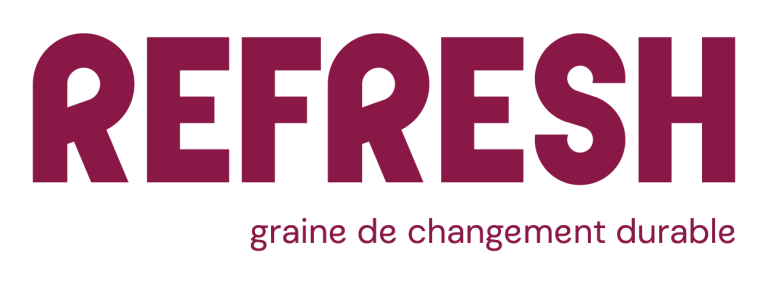Would you like to develop a project in Brussels? Would you therefore like to know the profile of the Brussels population, the behaviour of Brussels consumers or the number of companies operating in your sector in Brussels? Do you need specific data? Here is our selection of statistical data sources that will be useful for the development of your project in the Brussels area.
The Institute of Statistics of the Brussels-Capital Region and the Belgian Statistical Office are two sources of statistical data to be preferred in the first instance in the search for quantitative information concerning the Brussels region.
The Brussels Institute for Statistics and Analysis (BISA)
The Brussels Institute for Statistics and Analysis (BISA) provides you with a multitude of statistical data on the Brussels-Capital Region and its 19 municipalities. In order to understand the socio-economic environment in which you will be operating, please read the statistical data on the population of Brussels and the economic activity. You will find data on population trends and projections, age structure, number of inhabitants by nationality, income and expenditure per capita, and the socio-economic status of the inhabitants of Brussels. The data on economic activity will allow you to assess the number of companies, business start-ups and establishments employing salaried staff, by business sector.
BISA also publishes statistics on other topics, such as early childhood, health, tourism, culture, the environment and mobility and transport in Brussels.
Finally, you can view certain statistical data at district level in map form using to the application "District Monitoring for the Brussels-Capital Region". Although the number of indicators presented on this site is relatively limited, the map representation can be very useful for certain research purposes. However, be sure to check the year to which the data refers as it may be relatively old.
Statbel, the belgian statistical office
For a more detailed analysis of the needs of your future customers and the current offer, the website of the Belgian Statistical Office, Statbel, will be more appropriate. This website gives you the option to create and download personalised statistical tables via the be.STAT application, located at the bottom of the page of most of the tables presented. This application allows you, for example, to obtain the number of Brussels companies subject to VAT that are active in your target business sector of activity and in the municipality identified. The statistics presented can be aggregated by major business sector or detailed by sub-branch of activity (5-digit codes based on the Nace-Bel 2008 classification), a much finer subdivision than on the BISA website (2-digit codes).
Statistics on turnover based on the VAT return are also available in the "Companies" section of the site, by business sector and by region.
The site also provides you with the results of the Belgian household expenditure surveys. This data will allow you to evaluate the consumption habits of the Belgian or Brussels population for each type of good or service. The level of detail in the expense categories is higher than the granularity offered on the BISA website.
Hub.brussels
On its portal analytics.brussels, hub.brussels, the Brussels Agency for Business Support, publishes a series of data on the commercial activities located in the 62 shopping districts of the Brussels-Capital Region.
This portal allows you to consult maps and graphs describing the state of the commercial offer based in the region's main arteries of the territory and the results of analyses on pedestrian flows and the profile of the shoppers frequenting each district.
Continuously collected by the Agency's field teams, the data available on the portal are updated each year and put online shortly after being captured in the field. Their consultation is entirely free but requires the creation of a personal account to access the portal.
In association with perspective.brussels and the ULB, for several years, hub.brussels has published a report on the state of affairs of Brussels trade "Brussels trade in figures", based on the inventory of the Brussels sales outlets carried out by hub.brussels.
Visit.brussels
Are you interested in the development of tourism activities in Brussels? The Tourism Barometer of the Brussels-Capital Region, published by visit.brussels, will not fail to surprise you: hotel occupancy rates, average room prices, number of overnight stays according to the reason for the stay, supply of private rentals, number of overnight stays and average price of private rentals, attendance at museums and attractions and, finally, guided tours, are all data that you will find on their website, either through the interactive application or via the import of files presenting the history of the data.
Brussels Mobility
Mobility is an issue of great importance for the Brussels-Capital Region. Data Mobility Brussels, created by Brussels Mobility, gives you access to various data relating to mobility and public works in the Brussels-Capital Region. Here are the four options available to you:
- a map view of data related to mobility in Brussels and a real-time calculation of traffic flows on major roads through the Mobigis interactive application;
- a representation in the form of graphs and tables of mobility-related indicators;
- access to the "Cahiers de l'Observatoire de la mobilité de la Région de Bruxelles-Capitale", presenting analyses of the transport supply in Brussels, travel practices, goods transport and logistics, and the sharing of public space in the Brussels-Capital Region;
- access to raw data via the Open Datastore.
Perspective.brussels
In addition to the Brussels Institute of Statistics and Analysis, Perspective.brussels has a team specialising in territorial knowledge. It collects and analyses data related to different topics. We would like to highlight the studies and analyses carried out by three of its observatories:
- the Office Observatory: every year it publishes an analysis of the development of the office stock and vacancies in the Brussels-Capital Region;
- the Observatory of Productive Activities: it studies the occupation of land by productive or logistic companies;
- the Trade Observatory: it analyses the development of retail trade in the Brussels-Capital Region, in particular in partnership with hub.brussels.
View.brussels
Are you looking for data on the Brussels labour market and the region's employment or training needs? In this case, consult the Brussels Observatory for Employment and Training website, view.brussels. In addition to themed publications and data files, you will find interactive graphs and tables presenting the number of job offers and job seekers in the Brussels-Capital Region and the municipalities, using the "ViewStat" application.
There are a few more observatories and institutes in Brussels that should be mentioned:
- The Brussels-Capital Health and Social Observatory: it publishes an annual social barometer, thematic reports and statistical indicators relating to the health and social fields;
- The Parking Observatory of parking.brussels: this observatory has developed an application that displays personalised mapping data on parking in the Brussels-Capital Region. Via the Open Datastore, it also makes all data relating to parking in Brussels available to the public;
- The Regional Housing Observatory: this observatory publishes studies on the Brussels rental market and on the sale of residential property in Brussels;
- Brussels Studies Institute, the Brussels inter-university research platform: this platform publishes studies on themes that are a significant issue for the Brussels-Capital Region and organises debates and conferences related to the region's issues.
Eurostat
Still haven't found the statistical data you were looking for? Try your luck on the Eurostat website, the European Union's statistical office. You may find "the" statistic you were missing...
Finally, please feel free to consult the original sources of the statistical data presented on the BISA and Statbel websites. In most cases, these sources will offer you a much wider range of statistical data on specific topics. An example? Sciensano, to which BISA refers, publishes all the results of the "Health Survey" carried out among a sample of the Belgian population on its website.
While the statistical data collected gives you a better understanding of the environment in which you want to create or develop your activities, always be careful to analyse these data by understanding the universe they cover. Field analysis and qualitative and quantitative surveys will further complement the analysis of statistical data.
Who can help me ?




